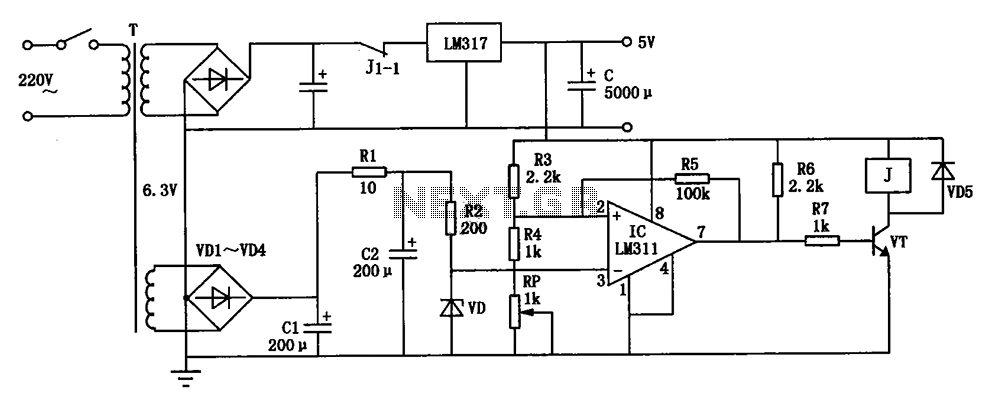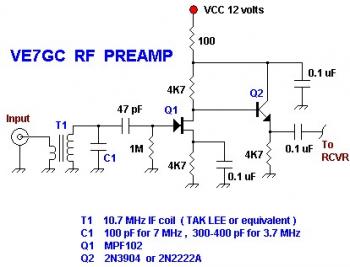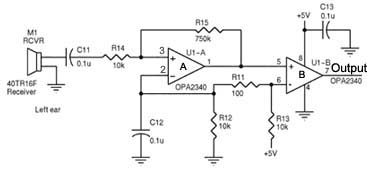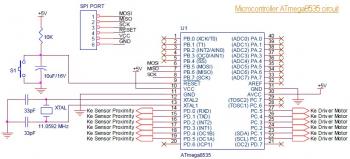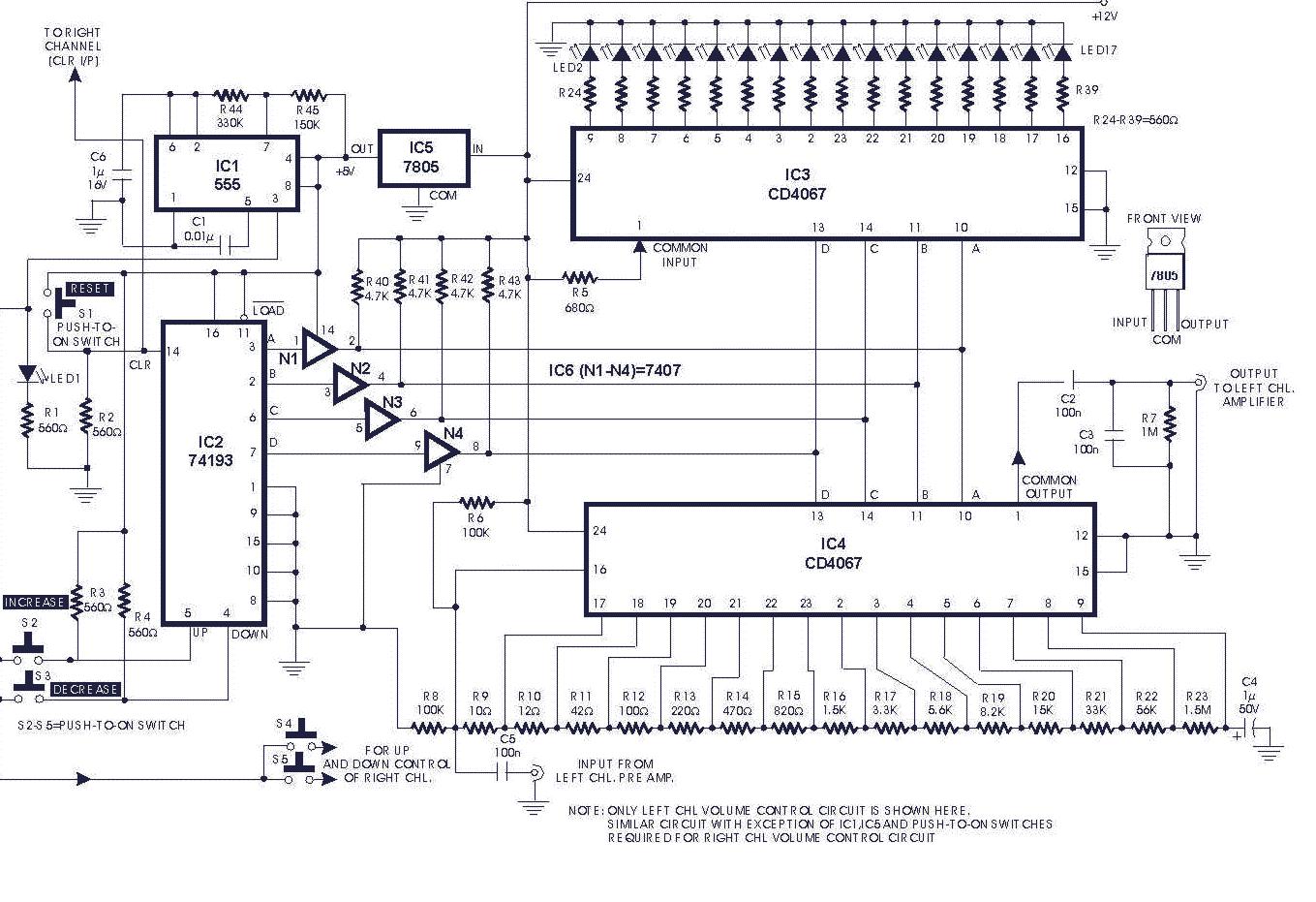
DZW75-48 50 50II high-frequency rectifier circuit
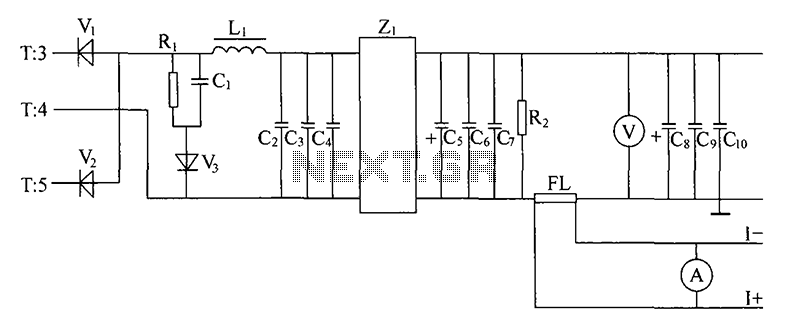
Alternating positive and negative voltage pulses from the secondary winding of a high-frequency transformer (T) are full-wave rectified by high-frequency switching diodes (V1, V2). The output is then filtered through inductors (L1) and capacitors (C2, C3, C4) which form an L-type filter, followed by a smoothing filter (Z1) to eliminate high-frequency noise, resulting in a stable 48V DC output voltage. The pulse width directly influences the output voltage level; wider pulse widths yield higher output voltages, while narrower pulse widths result in lower output voltages. A voltmeter is connected at the output to measure and display the DC voltage. R2 serves as a bleeder resistor, and FL is a shunt where a current meter is connected to measure the output current. The voltage across FL is also utilized as an output signal for the voltage regulator and current limiting circuit. The RCD snubber circuit, composed of R1, C1, and V3, is implemented to absorb any secondary voltage overshoot.
The circuit operates by converting the alternating voltage generated in the secondary of the high-frequency transformer into a usable direct current. The high-frequency switching diodes (V1, V2) are essential for efficient rectification, allowing for rapid switching and minimal losses. The L-type filter, consisting of the inductor (L1) and capacitors (C2, C3, C4), is designed to smooth the rectified output while attenuating high-frequency noise that may interfere with sensitive electronic components.
The output voltage regulation is achieved through careful manipulation of the pulse width, which is controlled by the switching frequency of the transformer. This feature allows the circuit to adapt to varying load conditions, maintaining a consistent 48V output regardless of fluctuations in input or load. The inclusion of a voltmeter provides real-time feedback on the output voltage, ensuring that any deviations from the desired level can be monitored and corrected.
R2, the bleeder resistor, plays a critical role in discharging capacitors when the circuit is powered down, preventing potential hazards from stored energy. The shunt (FL) facilitates accurate current measurements, providing essential data for the current limiting and sharing circuits. This ensures that the output current remains within safe operating limits, protecting both the power supply and connected loads.
The RCD snubber circuit, composed of R1, C1, and V3, is strategically placed to mitigate voltage spikes that can occur during the switching process. This protection is vital for enhancing the longevity and reliability of the diodes and other circuit components, preventing damage from transient voltage events. Overall, the design emphasizes efficiency, stability, and safety in delivering a regulated DC output.Alternating positive and negative voltage pulses of high-frequency transformer T secondary sensing, full-wave rectified by the rectifier High frequency switching diodes V1, V2 composition, and then after L1 inductors and capacitors C2, C3, C4 consisting of L-type filter and power supply Z1 smoothing filters at the output of high-frequency noise to get in line with the indicator of 48V DC voltage output. Pulse width directly determines the output voltage level. Wide pulse width, high output voltage, narrow pulse width, output voltage is low. And picked up at the output a voltage meter to measure the output DC voltage display. R2 is a bleeder resistor, FL for the shunt, a current meter is connected across both ends FL measurements show that the output current value rectifier, FL voltage across the current sampling value is also used as an output signal to the voltage regulator and current limiting, current sharing circuit.
R1, C1 and V3 composition RCD snubber circuit to absorb the secondary voltage overshoot.
The circuit operates by converting the alternating voltage generated in the secondary of the high-frequency transformer into a usable direct current. The high-frequency switching diodes (V1, V2) are essential for efficient rectification, allowing for rapid switching and minimal losses. The L-type filter, consisting of the inductor (L1) and capacitors (C2, C3, C4), is designed to smooth the rectified output while attenuating high-frequency noise that may interfere with sensitive electronic components.
The output voltage regulation is achieved through careful manipulation of the pulse width, which is controlled by the switching frequency of the transformer. This feature allows the circuit to adapt to varying load conditions, maintaining a consistent 48V output regardless of fluctuations in input or load. The inclusion of a voltmeter provides real-time feedback on the output voltage, ensuring that any deviations from the desired level can be monitored and corrected.
R2, the bleeder resistor, plays a critical role in discharging capacitors when the circuit is powered down, preventing potential hazards from stored energy. The shunt (FL) facilitates accurate current measurements, providing essential data for the current limiting and sharing circuits. This ensures that the output current remains within safe operating limits, protecting both the power supply and connected loads.
The RCD snubber circuit, composed of R1, C1, and V3, is strategically placed to mitigate voltage spikes that can occur during the switching process. This protection is vital for enhancing the longevity and reliability of the diodes and other circuit components, preventing damage from transient voltage events. Overall, the design emphasizes efficiency, stability, and safety in delivering a regulated DC output.Alternating positive and negative voltage pulses of high-frequency transformer T secondary sensing, full-wave rectified by the rectifier High frequency switching diodes V1, V2 composition, and then after L1 inductors and capacitors C2, C3, C4 consisting of L-type filter and power supply Z1 smoothing filters at the output of high-frequency noise to get in line with the indicator of 48V DC voltage output. Pulse width directly determines the output voltage level. Wide pulse width, high output voltage, narrow pulse width, output voltage is low. And picked up at the output a voltage meter to measure the output DC voltage display. R2 is a bleeder resistor, FL for the shunt, a current meter is connected across both ends FL measurements show that the output current value rectifier, FL voltage across the current sampling value is also used as an output signal to the voltage regulator and current limiting, current sharing circuit.
R1, C1 and V3 composition RCD snubber circuit to absorb the secondary voltage overshoot.
